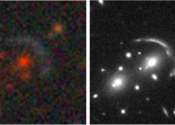Webb Space Telescope detects universe's most distant complex organic molecules
Researchers have detected complex organic molecules in a galaxy more than 12 billion light-years away from Earth—the most distant galaxy in which these molecules are now known to exist. Thanks to the capabilities of the ...









